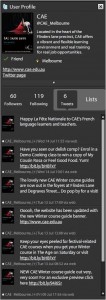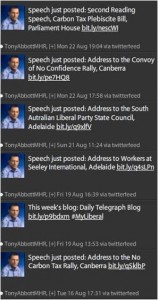During last week’s Copy Savvy webinar one question posed by all participants was more or less this: “How do we write appropriately for online communications – website, social media and eNewsletters – as compared to print? What should we do differently?”
This is a logical concern which implies that writers should write differently for different media as they have different qualities. This is true, though we think it misses one consideration that is even more important: audience.
We’ve included some tips for online writing below but here’s our point:
The tone you use, the issues you raise and the content you publish should be primarily influenced by your purposes and the audience at which you are aiming; not the medium.
Let’s compare writing a brochure for your broad-based disability service and writing online copy. The brochure will end up in GP waiting rooms, on the trestle table at community expos and on your reception desk. Yes the fact that it is a brochure will influence how you write. More influential though, should be the broad audience to which you are speaking, which has very little awareness of you and very little demonstrated commitment to you. This audience is largely chancing across your information so write accordingly.
People visiting your website are there by choice. You can presume some interest in your content, some connection to your cause albeit fleeting. Depending on the page they are visiting you may be able to assume that they are people with a disability looking for a service, carers of people with a disability, people looking to work at your organisation or prospective donors. Each audience should be addressed with a different tone. Changing tone for each audience is more important than changing tone for the medium.
Look at your website. Does the tone change from section to section to reflect the audience? There should be no one single audience for your website.
Progressing from websites to more social media such as Facebook, eNewsletters or Twitter the audience changes again as much as the media. People who choose to befriend or befollow* you have demonstrated an active interest in you. To some degree these audiences share your concerns, so talk to them in a manner befitting a friend or colleague. You can expect some support, some emotional connection.
That said; of course there are some rules of thumb to apply to online writing.

The Council of Adult Education’s Twittering shows great understanding of the medium. It is fun, personal, helpful. Kudos CAE.
Online attention spans are minimal so copy should be shorter. That said, Google likes 600-800 words a page as it believes these sites to be more genuine, more worthy of reference.
Search engine optimisation is key so write with your researched keywords in mind. (More about this in SEO Savvy 101 Thursday October 27). Use them early and often.
Use more images to bring your copy to life.
Change tone based on the section of the website for which you are writing. Are you trying to connect to donors, volunteers, job applicants, service users?
Utilise the ability to link to other articles and audio.
Why wouldn’t you utilise the ability to embed video?
You need to be genuinely committed to creating an ongoing flow of copy over time in the style of a magazine as we’ve written about previously.
Social media copy should be the most personal, passionate.Your copy should read as if it come from a person not an organisation.
Social media is all about sharing content of mutual interest. Not shameless plugging.
*there is no such word

